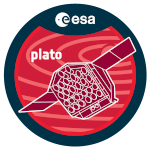Nearly a century ago, Eddington [1] recognized that the attenuation of radiation by stellar matter controls the internal temperature profiles within stars like the Sun. Opacities for high energy density (HED) matter are challenging to calculate because accurate and complete descriptions of the energy level structure, equation of state, and plasma effects such as continuum lowering and line broadening are needed for partially ionized atoms. This requires approximations, in part because hundreds of millions, or billions in some cases, of bound-bound and bound-free electronic transitions contribute to the opacity. Opacity calculations, however, have never been benchmarked against laboratory measurements at stellar interior conditions. Laboratory opacity measurements were limited in the past by the challenges of creating and diagnosing sufficiently large and uniform samples at stellar interior conditions. In research conducted over more than 15 years, we developed an experimental platform on the Z facility and measured [2,3] wavelength-resolved opacity at electron temperatures Te = 155-200 eV and densities ne = 0.7 – 5.0 x 1022cm-3 - conditions very similar to the radiation/convection boundary zone within the Sun. Models agree with data at the lower temperature and densities, but notable model-data discrepancies arise at higher temperatures and densities. The comparisons raise questions about how well we understand the behavior of atoms embedded in high energy density plasma. These measurements may also help resolve decade-old discrepancies between solar model predictions and helioseismic observations. This talk will provide an overview of the measurements, investigations of possible errors, and ongoing experiments aimed at testing hypotheses to resolve the model-data discrepancy.
Sandia National Laboratories is a multimission laboratory managed and operated by NTESS LLC, a wholly owned subsidiary of Honeywell International Inc. for the U.S. DOE's NNSA under contract DENA0003525.
1 A.S. Eddington, The Internal Constitution of the Stars (Cambridge Univ. Press, Cambridge, 1926).
2 J.E. Bailey et al., Nature 517, 56 (2015).
3 T. Nagayama et al., Physical Review Letters 122, 235001 (2019).

 PDF version
PDF version
